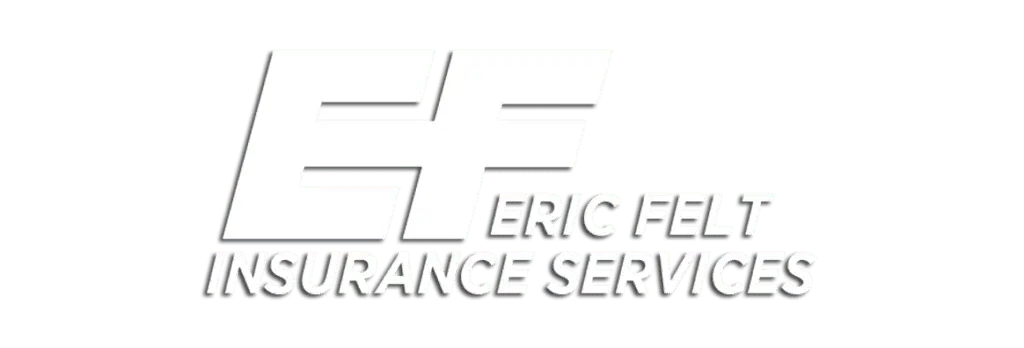Saving money without giving up essential coverage might seem like a tricky balance, but it doesn’t have to be. The key is understanding where you can cut costs without cutting corners on protection. Whether you’re reevaluating your current plans, bundling policies, or taking advantage of hidden discounts, there are smart ways to lower your insurance expenses while keeping your peace of mind intact. Don’t settle for less coverage—learn how to make every dollar count, starting today.
Why Review Your Current Insurance Policies
When was the last time you reviewed your insurance policies? If you’re like most people, it’s probably been a while. Life changes fast—you move, buy a car, renovate your home, or maybe the kids finally moved out. These shifts can leave your insurance coverage outdated or even redundant. Taking the time to review your policies today could cut unnecessary costs and provide better peace of mind tomorrow. Here’s why it’s worth your attention.
Eliminating Redundant Coverage
It’s easy to miss overlapping features between policies. For instance, you might have roadside assistance through both your car insurance and a credit card service. Paying for the same feature twice doesn’t add extra protection; it simply adds extra expenses.
Here’s how to streamline your coverage while keeping the essentials:
- Audit All Your Policies: Pull together your home, auto, health, and life insurance policies. Are there areas where coverage overlaps?
- Scrutinize Optional Add-Ons: Features like rental car insurance or extra tech equipment coverage may not be necessary if you’re already covered elsewhere.
- Speak With Your Agent: A quick conversation can help identify where you’re spending unnecessarily.
By trimming redundant coverage, you’re not sacrificing protection—you’re fine-tuning it to fit your needs. Think of it like clearing a cluttered closet; you’re saving space (and dollars) while holding onto what matters.

Photo by Mikhail Nilov
Assessing Current Needs
Your life today probably looks different from five or even two years ago. Maybe you’ve downsized your home or added a new family member. These shifts affect more than just your day-to-day—they directly impact the type and amount of coverage you need.
Consider these steps to tailor your policies:
- Review Major Life Events: Marriage, new home, kids heading to college, or retirement all call for adjustments.
- Factor in Economic Changes: Inflation impacts replacement costs for home and car repairs. Make sure your coverage reflects these increases.
- Coverage vs. Deductible Balance: If you’re comfortable with a higher deductible, you might lower premiums without losing substantial protection.
Regularly reviewing your insurance is like adjusting your thermostat—it ensures your home and family are covered comfortably without overspending.
Skipping regular policy reviews isn’t just a potential waste of money; it’s a missed opportunity to stay protected in ways that suit your current life. Reduce what’s extra, amplify what’s meaningful, and keep growing your financial security.
Shopping Around and Comparing Quotes
When it comes to saving money on insurance without losing the coverage you need, one of the smartest approaches is shopping around and evaluating your options. Insurance pricing isn’t one-size-fits-all—companies calculate rates differently, so comparing quotes can uncover substantial savings. Here’s how to make that process both easy and effective.
Utilizing Online Tools and Apps

Photo by Mikhail Nilov
Thanks to technology, comparing insurance quotes has never been easier. Instead of manually calling each provider, you can rely on a variety of online tools and apps to streamline the process. These platforms don’t just save time; they also give you a clearer picture of what’s available in the market.
Here are a few standout tools and apps currently making insurance comparison simple:
- The Zebra: Known for offering side-by-side comparisons from over 100 companies, The Zebra provides customized results based on your location and coverage needs.
- Insurify: This tool provides instant quotes and lets you filter results by deductible levels, premium amounts, or coverage limits to find the right balance.
- NerdWallet: While initially associated with financial planning, NerdWallet’s insurance section compares car insurance rates from leading companies like State Farm and Progressive.
- Policygenius: A well-known name, Policygenius specializes in home and auto insurance comparisons and includes editorial insight to guide buyers.
- Geico and State Farm Apps: If you prefer to explore single insurance providers, apps from these companies give access to quotes and manage policies conveniently.
Using these tools allows you to compare multiple options side-by-side, all while keeping your personal needs at the forefront. They work well for car, home, or even bundled coverage, helping you get the best deal with the least effort.
Timing and Frequency of Comparisons
When’s the best time to revisit your insurance options? It’s important to know that rates aren’t static. Insurers continually adjust their prices based on market changes, policyholder trends, and your personal driving (or claims) record.
Key timeframes to consider:
- At Renewal: Your policy renewal is a natural checkpoint. It’s also when insurers may adjust your rates. Comparing quotes before renewing ensures you won’t blindly accept a hike without exploring better options.
- After Major Life Events: Bought a new car? Moved to a different zip code? Got married? All these can impact your premiums, meaning it’s worthwhile to shop around.
- Annually: Even if everything has stayed the same on your end, reviewing quotes yearly can help you catch better rates. Some insurers roll out new discounts or premium adjustments over time.
- After a Clean-Up: If you’ve improved your credit score or had a ticket or accident fall off your record, insurers might now view you as “less risky.” Shop around as soon as these milestones occur to benefit from more competitive rates.
By taking an active approach, you can avoid overpaying or settling for a subpar policy. Think of insurance shopping as a way to renegotiate your financial terms—it’s worth the effort to revisit regularly.
Never assume loyalty equals the best price; insurers often reserve their biggest incentives for new customers.
Leveraging Discounts and Bundling
Saving money on insurance while maintaining quality coverage often boils down to finding the right discounts and combining policies under one insurer. Insurers reward loyalty, good habits, and consolidated accounts with lower premiums. Here’s how you can ensure you’re taking advantage of these opportunities.
Common Discounts to Look For
Insurance discounts are designed to reward safe habits, smart choices, and bundling. Knowing what to look for can unlock impressive savings on your insurance bill. Here are some of the most popular discounts available:
- Safe Driver Discounts
Insurers often offer significant savings to those with clean driving records. A history without accidents or claims over the last three to five years can save you up to 40%. - Good Student Discounts
For full-time students maintaining at least a B average or higher, good student discounts can reduce premiums by up to 25%. It’s a great way to support young drivers financially. - Multi-Policy Discounts
By combining policies under one insurer—like auto and home insurance—you can save an average of 10-25% on premiums. - Affiliations and Profession-Based Perks
Some providers offer discounts for being part of certain professions, alumni groups, or organizations. For instance, educators, military personnel, and healthcare workers often qualify for exclusive savings. - Usage-Based Discounts
Many insurers promote programs that monitor your driving habits through an app or device, offering savings of 5-40% based on factors like mileage and safe driving practices. - Vehicle-Specific Savings
Cars equipped with safety and anti-theft features often qualify for additional discounts. Vehicles with anti-lock brakes, airbags, or advanced safety systems could bring your rates down by 5-25%.
Take a moment to ask your insurer about any programs you qualify for. Many discounts can be “stacked,” meaning you could combine multiple savings to maximize your value.

Photo by Antoni Shkraba
The Advantages of Policy Bundling
Bundling policies—whether it’s auto, home, renters, or even life insurance—allows you to consolidate coverage under one insurer for added convenience and notable savings. But the perks of bundling go beyond financial discounts.
Why Bundling Works in Your Favor:
- Immediate Savings
Bundling typically garners a 5-25% discount on your policies. For most households, this reduces annual premiums significantly, making it one of the easiest ways to cut costs without sacrificing coverage. - Single Deductible for Claims
If you experience an incident that impacts more than one insured area (e.g., damage to both your car and home in a storm), some insurers require you to pay only one deductible instead of separate ones for each policy. - Simplified Policy Management
Keeping your policies under one roof translates to fewer bills, one renewal date, and a single point of contact for questions or claims. This not only saves time but also streamlines your financial planning. - Improved Coverage Options
Bundled policies can unlock enhanced protection. Many insurers add perks like umbrella policies, increased liability limits, or extended coverage options to loyalty accounts.
Tip: While bundling saves, don’t automatically assume it’s the best deal without comparison shopping. Each insurer calculates discounts differently, so compare total costs across multiple companies to ensure your bundle is a win for your wallet.
When you’re bundling or stacking discounts, you’re essentially making the most of your insurance provider’s loyalty perks. It’s like buying in bulk—more benefits for less expense. Just be sure you’re comparing the features, not just the price tag, to ensure your coverage meets your needs.
Adjusting Policy Coverage to Fit Your Budget
Insurance policies are designed to protect you from financial hardships, but they shouldn’t break the bank in the process. Adjusting your coverage is a practical way to save money without sacrificing essential protection. From raising deductibles to assessing optional add-ons, here’s how you can fine-tune your policy and align it with your budget.
Raising Deductibles for Lower Premiums

Photo by Mikhail Nilov
One of the quickest ways to lower your monthly insurance premiums is by raising your deductible. The deductible is the amount you pay out of pocket before your insurance kicks in for a claim. So, why does this adjustment work? Insurance companies see a higher deductible as lower risk—they’ll have to pay less in smaller claims, which means they can offer you a discount.
Here’s who might benefit most from this approach:
- Low-Claim Policyholders: If you rarely file claims, raising your deductible can save money over time.
- Emergency Savings Ready: Make sure you have enough in your savings to comfortably cover the higher deductible if needed.
For example, let’s say your car insurance has a $500 deductible, and your monthly premium is $120. Increasing that deductible to $1,000 could drop your premium to $85, saving you $420 a year. This strategy can work for home insurance too. Just be sure to weigh the upfront deductible costs against potential monthly savings.
Reassessing Optional Add-ons
Optional add-ons are designed to offer extra protection, but they can often come with a hefty price tag. The question is, do you truly need all of them?
Take some time to review your current plan and identify add-ons you could potentially drop. Common examples include:
- Roadside Assistance: Do you already have this service through an auto club or credit card?
- Rental Car Coverage: If you rarely use rental cars—or can manage without one temporarily—this could be an easy cost to cut.
- Electronic Equipment Coverage: Some policies offer coverage for things like stereos or GPS units. Are they still necessary, or could they be replaced inexpensively?
Removing unnecessary extras is like decluttering your garage—streamlining what you have while keeping only what’s valuable to your situation. Always double-check with your insurance agent to understand the impact on your overall protection before making changes.
Special Considerations for Older Vehicles
As your car ages and its value depreciates, certain types of coverage become less cost-effective. Collision and comprehensive coverage may no longer make sense for vehicles with a low market value.
Here’s why:
- Collision Coverage: Pays for damages to your car from accidents. If the cost of repairs exceeds your car’s worth, why pay for this coverage?
- Comprehensive Coverage: Covers non-accident-related issues like theft, storms, or vandalism. Again, evaluate whether the premiums outweigh the vehicle’s value.
A good rule of thumb is this: If the yearly cost of collision and comprehensive coverage exceeds 10% of your car’s current value, it might be time to drop them. For example, if your car is worth $3,500 but collision and comprehensive together cost $400 annually, you might want to reconsider. This doesn’t mean leaving yourself unprotected; liability coverage is still a must and typically required by law.
Being strategic about your coverage ensures you aren’t overpaying for unnecessary protection. Saving money while staying adequately insured is about tailoring your policy to fit your unique situation.
Additional Tips to Lower Insurance Costs
Finding ways to save on insurance doesn’t need to be overwhelming. By taking a proactive approach and adjusting minor factors, you can significantly reduce your premiums without cutting essential coverage. Below are actionable strategies to help lower your insurance costs while keeping your peace of mind intact.
Improving Your Risk Profile
Your risk profile plays a starring role in determining your insurance premiums. Insurance companies assess how likely you are to file a claim, and reducing perceived risks can lead to better rates. Here are a few effective ways to improve your profile:
- Install Safety Features: For auto insurance, adding features like anti-theft devices, dash cameras, or advanced driver assistance systems (ADAS) can make your car safer—and cheaper to insure. For homeowners, consider installing a security system, smoke detectors, or water leak sensors.
- Maintain a Good Credit Score: Many insurers factor in credit scores when setting premiums. Paying bills on time, keeping credit utilization low, and clearing outstanding debts can make a big difference.
- Clean Driving Record: Avoid accidents and traffic violations. Participating in defensive driving courses might even earn you discounts while improving your overall driving skills.
- Regular Maintenance: Whether it’s your home or your car, keeping everything in good shape reduces the risk of claims. For example, maintaining your HVAC system or checking your car’s brakes can prevent costly issues down the road.
Think of your risk profile like a report card—it rewards responsibility and preparedness. By actively improving these areas, you’re not just buying peace of mind; you’re lowering costs, too.
Exploring Usage-Based Insurance
Usage-based insurance (UBI) programs are perfect if you’re a low-mileage driver or someone with safe driving habits. These policies calculate premiums based on how—and how much—you drive, using telematics devices or mobile apps to track data.
Here’s why usage-based insurance might work for you:
- Pay Per Mile: If you drive only a few thousand miles annually, consider “pay-per-mile” insurance. This is ideal for those who work from home, live in walkable areas, or simply drive less.
- Safe Driving Incentives: Many insurers track speed, braking habits, and time of day to evaluate risk. The safer you drive, the more you save.
- Eco-Friendly Savings: By driving less, you’re inadvertently reducing harmful emissions. Some insurers even offer additional perks for eco-conscious customers.
Examples of popular programs include Progressive’s Snapshot®, Allstate’s Drivewise®, or Liberty Mutual’s RightTrack®. The bottom line? If you drive less than the national average, a UBI plan could keep more money in your pocket.
Understanding Group and Membership Discounts
Did you know your job, alumni network, or professional membership could help you save on insurance? Group discounts are one of the most underrated ways to cut costs, with savings often hidden in plain sight.
Check out these common opportunities:
- Employer-Sponsored Plans: Some companies negotiate discounted rates with certain providers for their employees. It’s worth checking if your workplace offers this perk.
- Alumni Associations: Do you belong to a college alumni group? Many universities partner with insurance companies to provide exclusive discounts for graduates.
- Professional Organizations: Membership in groups like AARP, AAA, or trade unions often comes with discounted rates. For example, medical professionals, teachers, or military service members frequently have access to special savings.
- Affinity Programs: Some credit card providers and large retailers partner with insurers to offer members reduced premiums or cashback rewards on policy purchases.
When exploring these discounts, make sure you ask specific questions. How much will you save? Does the discount apply to all types of coverage, or only specific policies? Pinpointing these details ensures you maximize savings while maintaining the coverage you need.
By taking small yet deliberate steps like improving your risk profile, researching usage-based policies, and capitalizing on group benefits, you can shave a significant amount off your insurance premiums. Little actions add up, and the savings will too.
Conclusion
Saving money on insurance without sacrificing coverage isn’t about cutting corners—it’s about making smarter choices. Whether you’re reviewing policies, bundling plans, or utilizing discounts, the key is taking an active role in managing your coverage. A little effort today can translate into significant savings tomorrow.
Start by evaluating your current policies for gaps or overlaps and explore quotes from different providers. Don’t forget to ask about discounts or reconsider optional add-ons that may not serve you anymore. Your financial well-being and peace of mind deserve the perfect balance of savings and protection.
Take charge of your insurance today by reviewing your needs and exploring better options. What’s one step you can take right now to save while staying covered?



